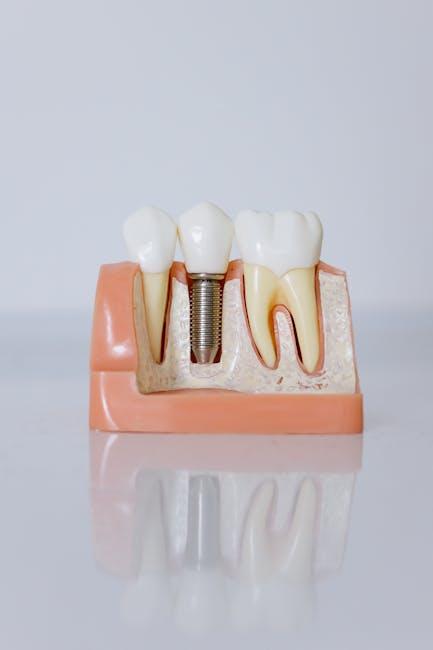
Dental Spending Increased by $4B in 2023 – American Dental Association
Dental health remains a crucial part of overall well-being, and the latest figures from the American Dental Association (ADA) reveal a significant shift in how much Americans are investing in their oral care. In 2023, dental spending surged by an impressive $4 billion, signaling evolving trends in healthcare priorities, technological advancements, and patient awareness.
Understanding the $4 Billion Increase in Dental Spending
According to the ADA’s comprehensive annual analysis, total dental expenditures in the U.S. rose dramatically in 2023 compared to previous years. This increase reflects not only inflationary pressures but a real boost in the volume and complexity of dental treatments administered nationwide.
Key Drivers Behind the Increase
- Growing Demand for Preventive Care: More Americans are seeking regular cleanings, checkups, and oral screenings to prevent serious dental issues.
- Advancements in Dental Technology: High-tech solutions such as 3D imaging, laser dentistry, and CAD/CAM restorations have become more accessible and often cost more upfront.
- Cosmetic Dentistry Trends: There is increased spending on teeth whitening, veneers, and orthodontic treatments that aim to improve a person’s smile aesthetics.
- Expanded Insurance Coverage: Enhanced dental benefits and insurance plans have improved access to dental services, encouraging more frequent visits.
- Post-Pandemic Oral Health Focus: The COVID-19 pandemic underscored the importance of healthcare, prompting many to address postponed dental care needs.
What the Increased Dental Spending Means for Patients
For patients, the $4 billion uptick in dental spending can be a double-edged sword. On one hand, access to innovative treatments and improved preventive care leads to healthier smiles and better quality of life. On the other hand, rising costs require savvy management of dental health budgets and insurance benefits.
How Dental Spending Impacts Oral Health Outcomes
- Improved Access: More people can afford routine and specialized care due to broader coverage and clinic accessibility.
- Early Detection and Treatment: Enhanced spending often means better screening tools that catch dental diseases early, leading to less invasive and expensive interventions down the line.
- Enhanced Patient Education: Increased funds allow dental practices to offer valuable education on maintaining oral health.
Dental Spending Breakdown: Insights from ADA Data
| Category | Spending Share | Year-over-Year Growth |
|---|---|---|
| Preventive Care (cleanings, exams) | 35% | +6% |
| Restorative Procedures (fillings, crowns) | 28% | +4% |
| Cosmetic Dentistry (veneers, orthodontics) | 15% | +10% |
| Oral Surgery and Specialty Care | 12% | +5% |
| Dental Insurance & Ancillary | 10% | +3% |
Practical Tips to Manage Rising Dental Costs
While the increase in dental spending indicates progress in oral health, managing personal dental expenses has become more important than ever. Here are actionable tips to keep your dental care affordable and effective:
- Maximize Your Dental Insurance: Understand your plan’s benefits, use preventive care visits to avoid costly procedures later, and stay within network providers to reduce out-of-pocket costs.
- Schedule Regular Checkups: Catch potential problems early to prevent expensive treatments.
- Consider Dental Savings Plans: Discount dental plans can help lower fees for common treatments.
- Practice Good Oral Hygiene: Brush twice daily, floss regularly, and avoid habits harmful to teeth like smoking or excessive sugar intake.
- Ask About Payment Plans: Many dental offices offer flexible financing options for costly procedures.
Case Study: How Increased Spending Benefits Patients
Take the example of Sarah, a 34-year-old professional who struggled with dental anxiety and had postponed treatment for years. With expanded dental benefits and the availability of sedation dentistry (a service enabled by technological and spending advances), she was able to undergo several restorative procedures comfortably. Sarah’s story illustrates how higher dental spending translates to better patient experiences and outcomes:
- Access to latest technology reduced treatment time and discomfort.
- Comprehensive insurance kept most costs manageable.
- Preventive counseling helped Sarah maintain healthier habits post-treatment.
Looking Ahead: The Future of Dental Spending
The American Dental Association projects that dental spending will continue to rise modestly in the coming years, driven by aging populations, technological innovation, and public health initiatives promoting oral care awareness.
Dental professionals and patients alike must stay informed about evolving costs and benefits to optimize oral health investments for the long term.
Conclusion
The remarkable increase of $4 billion in dental spending in 2023 as reported by the American Dental Association underscores a positive trend towards greater investment in oral health across the United States. While dental care costs may be rising, the benefits to patient access, technology, and preventive health far outweigh the challenges. By staying informed and proactive, patients can navigate this changing landscape effectively and keep their smiles healthy and bright for years to come.


